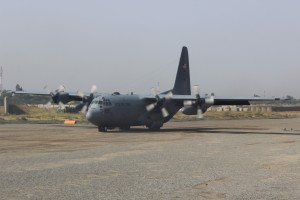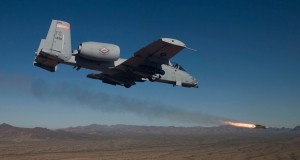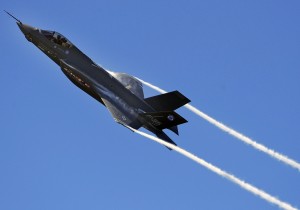The F-35 vs the A-10: Does it Really Matter Which is Better?
I just read an interesting article that compared the value of the A-10 against the complete waste of money that is the F-35. The general essence of the article was that the A-10 is the greatest plane ever designed and that the F-35 is the biggest waste of money in US military history. The writer makes enough good points that it is hard to disagree with that summary however extreme it may be.
I will admit that I jumped on the F-35 band wagon when it was first announced years ago. It was a beautiful looking plane that was advertised to have amazing capabilities. The technology involved was fascinating, and it sounded like it would be the most versatile and effective aircraft in the inventory.
Unfortunately, the reality has been almost completely the opposite.
The F-35 program has been one delay after another with unlimited amounts of controversy at every turn. On the other hand the A-10 has been a dream of a plane that for some unexplainable reason the Air Force has tried to get rid of on numerous occasions.
There are pictures and videos all over the internet of A-10s that are seriously damaged that finished their mission and returned the pilot home safely. On the other hand, the internet is flooded with stories about the problems the F-35 has had before ever flying an operational mission. The most recent issue being that the F-35 can’t operate with fuel that is too warm. This could be a bit of an issue considering the fact that most of the conflicts currently taking place are happening in areas that can be extremely hot.
The problem that I see with this debate is the general point that the aforementioned article makes. Who is considering the real benefits of the aircraft we are buying?
I do feel that there is value in stealth aircraft, not because it makes planes invisible, but because it does make it more difficult for enemies to detect our aircraft. But does the F-35 provide that much of a stealth advantage over the F-15 Silent Eagle proposal to justify that dramatically higher price tag?
The one thing I have never understood is why we are dropping so much money on completely new aircraft designs when we have amazing airframes that could continue to operate with new technologies applied to make them even better? I look at aircraft like the A-10, F-15E, and F-16 and wonder why we aren’t just continuing to upgrade these incredibly effective platforms.
I guess it comes back to the problem mentioned in the first article, the Air Force is generally run by fighter jocks that like shiny new toys and not necessarily the ones that will do the job the best.

The C-130 is one of the most effectively employed airframes in the Air Force as evidenced by its longevity.
The interesting aspect of that theory though is that the problem is not quite as evident when you look at the mobility side of the Air Force. The best example of course being my beloved C-130 Hercules. It has been in service with the Air Force for 60 years now and simply continues to receive upgrades. While I feel there are some deficiencies in the newest variant, the C-130J, it is still an incredibly versatile and effective airframe. Fortunately, the Air Force has not tried to force in a new airframe, but has realized the real value of this aircraft.
When you look at the mobility fleet of the Air Force it is currently made up of three planes the C-17 (~25 years of service), the C-5 (~45 years of service), and the C-130 (~60 years of service). I’m not really sure how the longevity of these planes is so completely overlooked when it comes to assembling the strike fleet on the other side of the Air Force.
I realize there are significant differences between mobility and strike aircraft, but I also don’t think the differences are so dramatically different that strike aircraft need to be completely replaced that much more often. Maybe I’m wrong?
In the end, it really feels like the original article is preaching some pretty serious truth about the Air Force. There really does seem to be a systemic problem when it comes to acquiring new aircraft. There seems to be a disconnect between the war-fighter and those tasked with supplying them.
But rather than just complaining about the situation I have to wonder how that problem can be fixed. The simple answer to me as a brand new Captain is to get more real feedback from the operators that are actually flying these planes everyday. That means getting feedback from Lieutenants, Captains, and Majors that are actively operating these airframes. Most importantly, that feedback must actually be implemented in the development and purchasing processes.
We shouldn’t be going to Colonels who are busy with a lot of things other than flying when it comes to understanding what our planes currently do, and how they can be improved to support the current environment. Obviously, we shouldn’t let Lieutenants and Captains make the actual purchases but if we aren’t allowing for input from the people who are actually using the product then we are completely missing the point.
Way too many of these decisions are being made by people who have biased agendas rather than by the people who are putting their lives in the cockpits of these planes. We need to reassess the process and make sure that we are making the right decisions to defend our country, and not the decisions that will line anyone’s pockets.
I realize this is much easier said than done, but the discussion has to start somewhere. I think there are enough people in the process that genuinely care about the situation to make a change if they will simply DO something about it. At the very least maybe they will do something to get others thinking that may ultimately lead to effective changes throughout the entire process.
For now we can only hope that the incredible operators that are tasked with employing these airframes will continue to be the best trained and most capable operators in the world to make sure that we continue to be the world’s finest Air Force.





